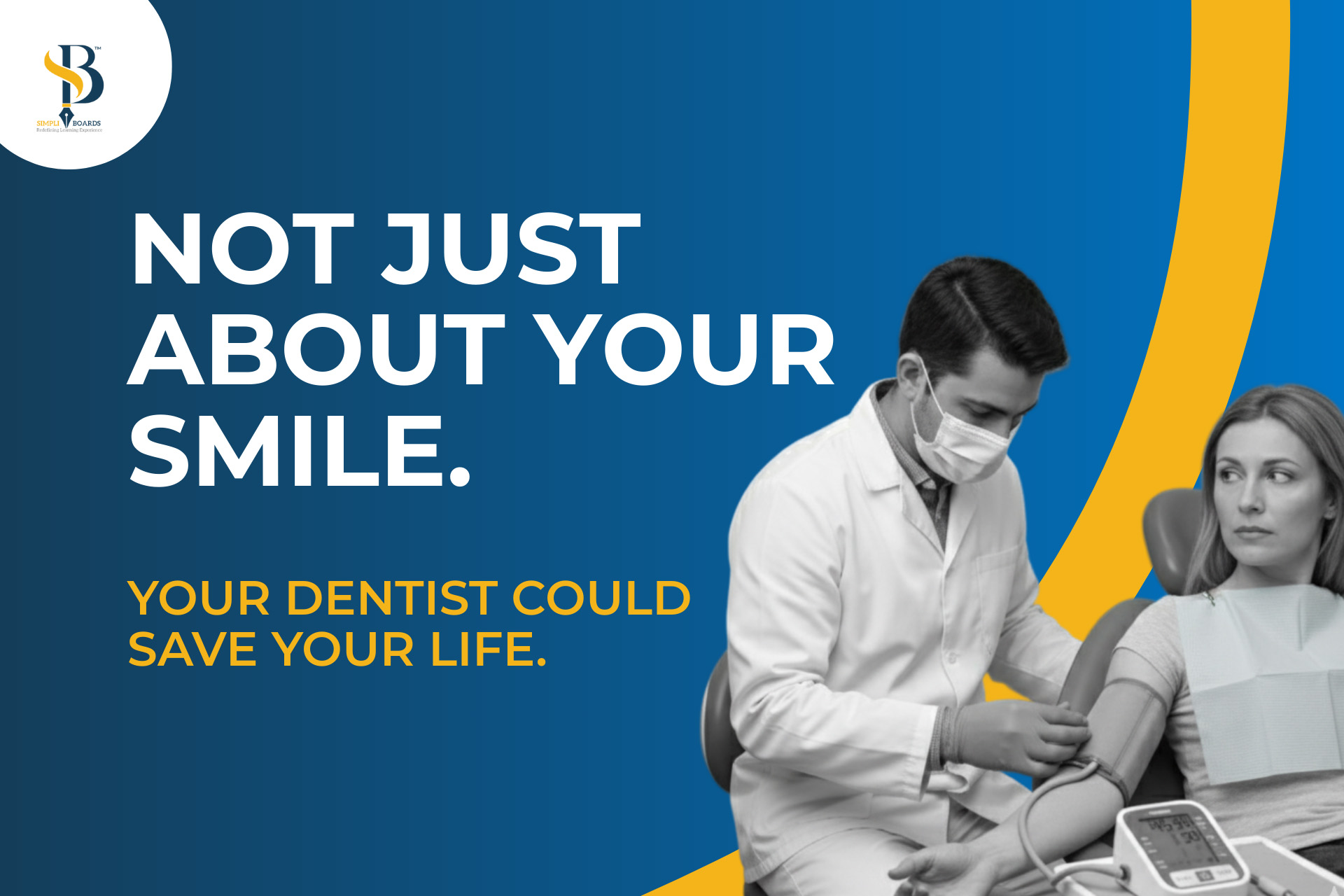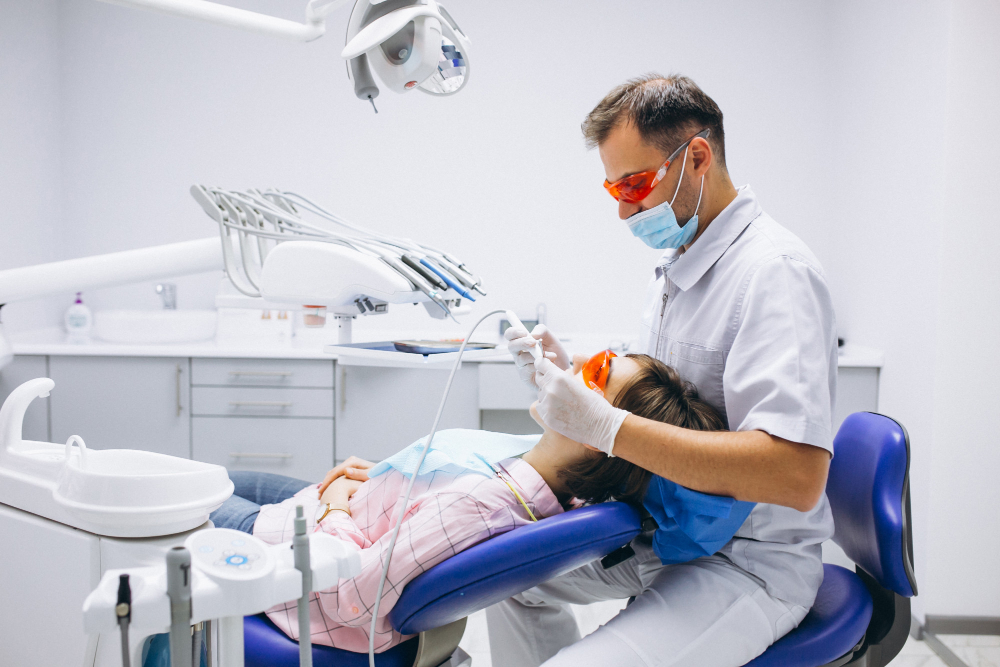
Hypertension and Dental Care Important Facts for Better Health

Written By:
Dr. Sujit Pradhan
BDS, MBA
Table of Content:
- Introduction
- Understanding Hypertension
- Updated 2025 AHA/ACC Guidelines
- Why Dentists Monitor Blood Pressure
- Dental Treatment Thresholds for Hypertensive Patients
- Stress Reduction in the Dental Chair
- Local Anesthetics and Hypertension
- Oral Side Effects of Hypertension Medications
- Case Studies
- Hypertension and Dental Students
- Lifestyle, Prevention, and Patient Counseling
- Final Takeaways
Introduction: Why Hypertension Matters in Dentistry
Hypertension, commonly known as high blood pressure, is one of the most pressing public health concerns of the 21st century. Often labeled the “silent killer,” it can remain asymptomatic for years while silently damaging vital organs such as the heart, brain, and kidneys. Left uncontrolled, hypertension is a major contributor to heart disease, stroke, kidney failure, and premature death.
What may surprise many patients is that their dentist may be among the first healthcare providers to identify high blood pressure. Today, routine blood pressure screening during dental visits is considered a standard of care across the United States and Canada. In fact, research shows that nearly 1 in 4 patients with hypertension are first identified at a dental office.

This blog provides a deep dive into hypertension from a dental perspective—covering updated guidelines, treatment modifications, medication side effects, and clinical best practices. It is also particularly valuable for dental students preparing for exams such as INBDE, AFK, ADAT, and NDEB, where hypertension remains a high-yield topic.
Understanding Hypertension: The Basics
Hypertension is defined as consistently elevated blood pressure measured in millimeters of mercury (mmHg). It has two values:
-
Systolic pressure (the top number): The pressure in arteries during heartbeats.
-
Diastolic pressure (the bottom number): The pressure between beats when the heart rests.
For example, a reading of 120/80 mmHg means a systolic pressure of 120 and a diastolic pressure of 80.
Why is it called the “silent killer”? Because many people feel perfectly fine even when their blood pressure is dangerously high. Symptoms, if they appear, may include headaches, nosebleeds, shortness of breath, or dizziness, but these often occur only at advanced stages.
Updated 2025 AHA/ACC Guidelines
The American Heart Association (AHA) and American College of Cardiology (ACC) issued updated guidelines in 2025 that dentists should be aware of:
-
Normal: <120 / <80 mmHg
-
Elevated: 120–129 / <80 mmHg
-
Stage 1 Hypertension: 130–139 / 80–89 mmHg
-
Stage 2 Hypertension: ≥140 / ≥90 mmHg
-
Hypertensive Crisis: >180 / >110 mmHg
⚡ Clinical Tip for Exams (INBDE/AFK): If systolic and diastolic fall into different categories, always assign the higher category.

Why Dentists Monitor Blood Pressure
Blood pressure checks are not optional add-ons anymore—they are an integral part of dental care. Dentists and hygienists measure BP in situations such as:
-
New patient appointments (baseline recording)
-
Recall visits (to track changes over time)
-
Before complex/invasive procedures (extractions, implant placements, periodontal surgeries)
This is important because:
-
Some patients are unaware they have hypertension.
-
Others may have poorly controlled hypertension despite being on medication.
-
Some may present with dangerously high readings that require immediate referral.
Example: Imagine a patient presenting for a tooth extraction with BP 182/112 mmHg. Proceeding with treatment could trigger a stroke or heart attack in the chair. Immediate medical referral is the safest choice.
Dental Treatment Thresholds for Hypertensive Patients
The decision to proceed with or postpone dental treatment depends on the blood pressure reading.
| Blood Pressure | Elective Dental Care | Emergency Dental Care |
|---|---|---|
| <160/100 mmHg | Proceed normally | Proceed normally |
| 160–180/100–109 mmHg | Defer unless cleared by physician | Proceed cautiously, monitor every 10–15 mins |
| >180/110 mmHg | Do NOT proceed; refer to physician | Do NOT proceed; urgent medical evaluation required |
⚡ Exam Tip: Remember the 160/100 mmHg cutoff for elective care and the 180/110 mmHg cutoff for emergencies.
Stress Reduction in the Dental Chair
Patients with hypertension are more vulnerable to stress-induced spikes in blood pressure. A “routine” filling may turn into a medical emergency if anxiety is not managed. Strategies include:
-
Scheduling shorter, morning appointments (when stress and fatigue are lowest).
-
Ensuring profound local anesthesia to prevent pain-triggered stress responses.
-
Using nitrous oxide sedation or oral anxiolytics for anxious patients.
-
Maintaining a calm, reassuring chairside manner.
Dentists are encouraged to keep emergency kits—including oxygen, nitroglycerin, and BP monitors—ready in case of sudden hypertensive episodes.
Local Anesthetics and Hypertension
Many dental local anesthetics contain epinephrine, which prolongs anesthesia and controls bleeding. While epinephrine is not strictly contraindicated in controlled hypertension, careful use is essential.
-
Limit epinephrine to 0.04 mg (≈2 cartridges of 1:100,000 solution).
-
Avoid epinephrine-impregnated retraction cords in uncontrolled hypertension.
-
Use aspiration and slow injection techniques to minimize intravascular delivery.
⚡ Exam Tip: “2 cartridges of 1:100,000 epi” is the safe limit for hypertensive patients.
Oral Side Effects of Hypertension Medications
Dental professionals must recognize the oral manifestations of common antihypertensives:
| Medication Class | Common Oral Side Effects |
|---|---|
| Beta-Blockers | Dry mouth, taste changes, lichenoid reactions |
| Calcium-Channel Blockers | Gingival hyperplasia (notably nifedipine), dry mouth |
| Diuretics | Xerostomia, lichenoid lesions |
| ACE Inhibitors | Dry cough, loss of taste, oral ulceration, angioedema |
| ARBs | Dry mouth, angioedema, taste changes |
Case Studies
Case Scenario 1: The Undiagnosed Hypertensive Patient
A 52-year-old patient presents for scaling and root planing. On BP check, the reading is 178/108 mmHg. The patient denies a history of hypertension. The dentist postpones treatment, explains the finding, and refers the patient to a physician. The patient is later diagnosed with Stage 2 hypertension.
Learning Point: Dentists can literally save lives by identifying undiagnosed hypertension during routine visits.
Case Scenario 2: Emergency Dental Extraction in a Hypertensive Patient
A patient with BP 165/105 mmHg needs emergency extraction for acute abscess. Elective care would normally be deferred, but given the infection risk, the dentist proceeds cautiously with:
-
Continuous BP monitoring every 10–15 minutes
-
Minimal epinephrine (1 cartridge, 1:100,000)
-
Profound local anesthesia and nitrous oxide sedation
The procedure is completed safely without complications.
Hypertension and Dental Students: Exam Prep Notes

For students preparing for INBDE, AFK, ADAT, and NDEB exams, hypertension is often tested under “systemic disease with dental implications.” High-yield points include:
-
Definitions and BP categories (normal, elevated, Stage 1, Stage 2, crisis).
-
Treatment modifications (cutoff values for elective/emergency care).
-
Epinephrine limits in hypertensive patients.
-
Oral side effects of common antihypertensive medications.
-
Periodontal–systemic disease link with hypertension.
Flashcard example:
Q: What is the safe limit of epinephrine for controlled hypertensive patients?
A: 0.04 mg (≈2 cartridges of 1:100,000).
Lifestyle, Prevention, and Patient Counseling
Dentists can also play a preventive role by encouraging:
-
Routine BP monitoring at home.
-
Healthy lifestyle modifications: balanced diet, reduced salt intake, exercise.
-
Good oral hygiene practices to reduce systemic inflammation.
This reinforces the holistic role of dentists as not just oral health providers but partners in overall patient wellness.

Final Takeaways
-
Hypertension is common, often undiagnosed, and may first be detected at a dental visit.
-
Dentists play a vital role in screening, modifying treatment, and collaborating with physicians.
-
Blood pressure thresholds must guide decisions for elective vs emergency care.
-
Medication side effects must be identified and managed.
-
Oral health is closely linked to blood pressure control.
-
For dental students, hypertension remains a high-yield exam topic.
At the heart of it all lies the message: dentistry saves more than smiles—it can save lives.



